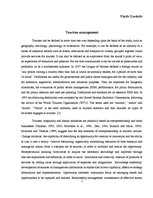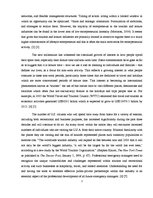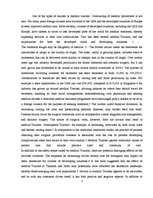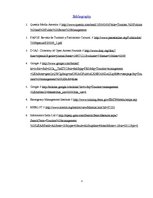-
Tourism Management
The new millennium has witnessed the continued growth of interest in how people spend their spare time, especially their leisure time and non-work time. Some commentators have gone as far as to suggest that it is leisure time – how we use it and its meaning to individuals and families – that defines our lives, as a focus for non-work activity. This reflects a growing interest in what people consume in these non-work periods, particularly those times that are dedicated to travel and holidays which are more concentrated periods of leisure time. This interest is becoming an international phenomenon known as ‘tourism’: the use of this leisure time to visit different places, destinations and localities which often (but not exclusively) feature in the holidays and trips people take in. For example, in 2005 the World Travel and Tourism Council (WTTC) estimated that travel and tourism as economic activities generated US$6201 billion which is expected to grow to US$10678.5 billion by 2015. [4] [5]
The number of U.S. citizens who will spend time away from home for a variety of reasons, including both recreational and business purposes, has increased significantly during the past three decades and will continue to do so. As many travel within the nation they will encounter increased numbers of individuals who are visiting the U.S.A. from their native country. Minimal familiarity with the places they are visiting and the mix of hazards represented places such transitory populations at extreme risk. …
Tourism can be defined in more than one way depending upon the basis of the study, such as geography, sociology, psychology or economics. For example, it can be defined as an industry or a series of industrial sectors such as hotels, restaurants and transport all loosely grouped together which provide services for tourists. It can also be defined as an experience from the tourist’s point of view, an experience of relaxation and pleasure. For the host communities it can be viewed as pleasurable and profitable, or as a troublesome nuisance. In 1937 the League of Nations defined a foreign tourist as ‘any person visiting a country other than that in which he normally resides, for a period of more than 24 hours’. Definitions are useful for governments and public sector managers and for the industry, and for statistical, legislative, administrative and industrial purposes. They are important for budgetary allocations, the evaluation of public sector management (PSM) performance, for policy formulation, and for policy resource and land-use planning. Definitions and statistics are an essential PSM tool. In 1993 the following definitions were accepted by the United Nations Statistical Commission, following the advice of the World Tourism Organisation (WTO). The terms used are ‘tourism’, ‘visitor’ and ‘tourist’. ‘Visitor’ is the term normally used in tourism statistics and that includes all types of travellers engaged in tourism. [1]





